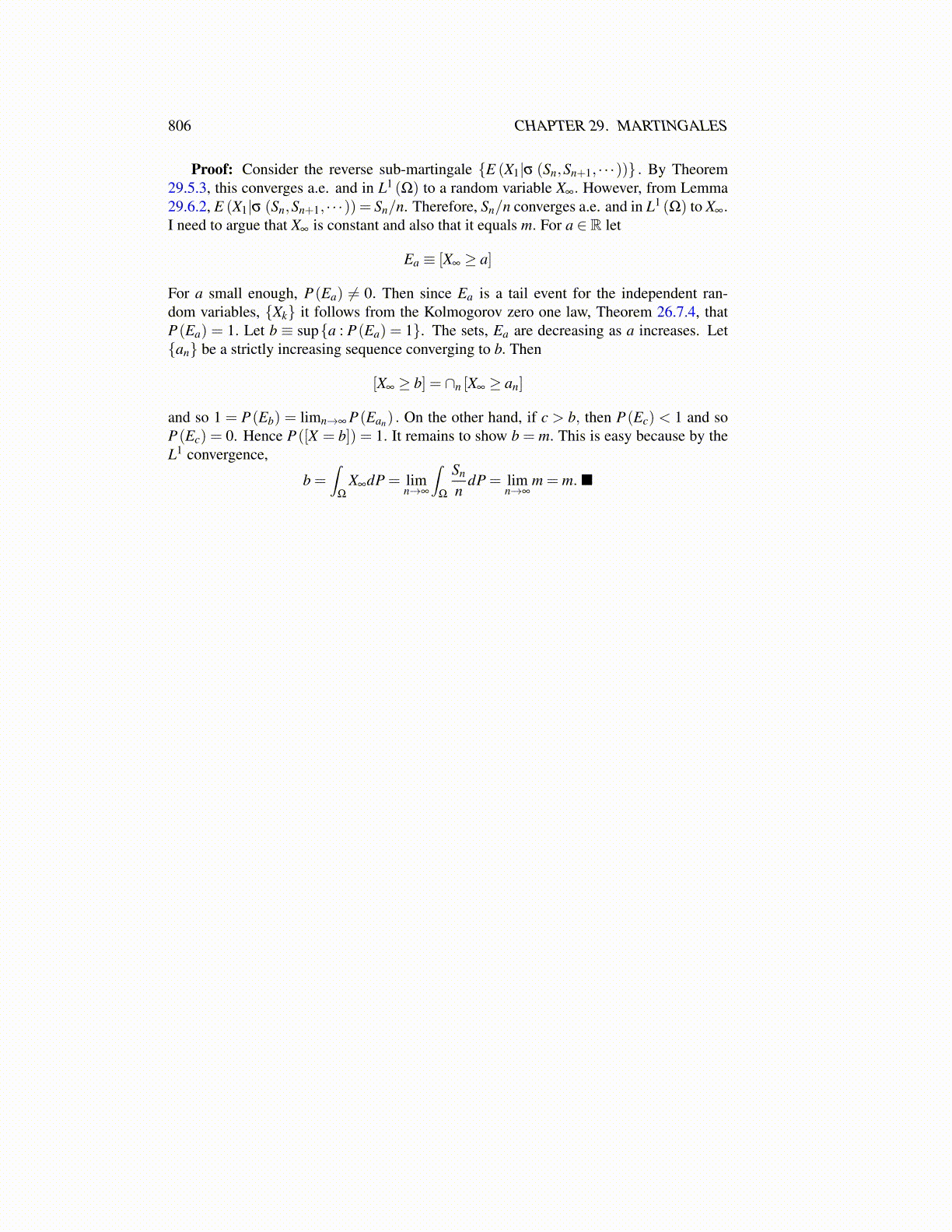
806 CHAPTER 29. MARTINGALES
Proof: Consider the reverse sub-martingale {E (X1|σ (Sn,Sn+1, · · ·))} . By Theorem29.5.3, this converges a.e. and in L1 (Ω) to a random variable X∞. However, from Lemma29.6.2, E (X1|σ (Sn,Sn+1, · · ·)) = Sn/n. Therefore, Sn/n converges a.e. and in L1 (Ω) to X∞.I need to argue that X∞ is constant and also that it equals m. For a ∈ R let
Ea ≡ [X∞ ≥ a]
For a small enough, P(Ea) ̸= 0. Then since Ea is a tail event for the independent ran-dom variables, {Xk} it follows from the Kolmogorov zero one law, Theorem 26.7.4, thatP(Ea) = 1. Let b ≡ sup{a : P(Ea) = 1}. The sets, Ea are decreasing as a increases. Let{an} be a strictly increasing sequence converging to b. Then
[X∞ ≥ b] = ∩n [X∞ ≥ an]
and so 1 = P(Eb) = limn→∞ P(Ean) . On the other hand, if c > b, then P(Ec) < 1 and soP(Ec) = 0. Hence P([X = b]) = 1. It remains to show b = m. This is easy because by theL1 convergence,
b =∫
Ω
X∞dP = limn→∞
∫Ω
Sn
ndP = lim
n→∞m = m.■